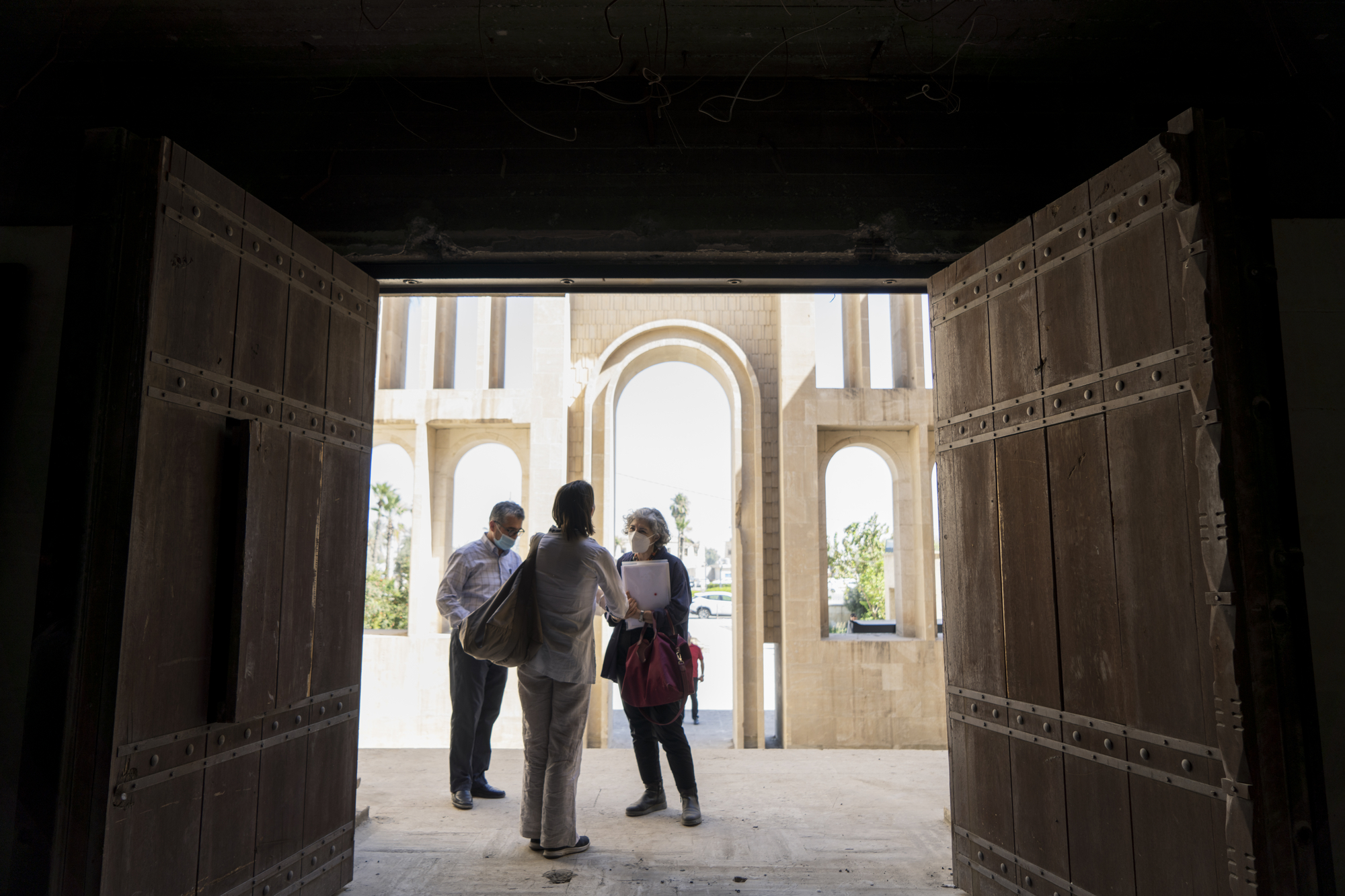- Home
- Partners
Musée du Louvre
Created in 1793, the Louvre Museum became a public administrative institution under the supervision of the Ministry of Culture in 1992. Its mission is: to conserve, preserve, restore on behalf of the State and present to the public the works that are part of the collections listed in the inventories of the national museum of Louvre, which it holds in custody; to ensure the reception of the public, develop attendance at the museum and promote knowledge of its collections, by all appropriate means; to ensure the scientific study of its collections; to contribute to education, training, and research in the field of art history, archaeology, and museography; to manage an auditorium and develop its programming; and finally, to preserve, manage, and enhance the buildings it owns.
The Department of Near Eastern Antiquities has a long history, closely linked to Iraq. As early as the 19th century, France, through the intermediary of its consuls posted in Mosul, became involved in archaeological research to rediscover the ancient past of northern Iraq. The pioneer of this adventure was Paul-Émile Botta, whose excavations in Khorsabad in 1843 resurrected the Assyrian civilisation. Thus, the very first modern "Assyrian Museum" was inaugurated on 1rst May 1847 in the Louvre Palace. This nucleus was enriched by the discoveries of Victor Place who succeeded Botta and excavated Khorsabad between 1852 and 1854.
Thanks to the discoveries of Ernest de Sarzec from 1877 onwards, on the site of Tello in southern Mesopotamia, Sumerian civilisation was revealed to scholars. From 1879 onwards, Léon Heuzey, curator at the Louvre Museum, continued this archaeological research, which, with the arrival in France of the first antiquities from Tello, led to the official creation of the "Department of Oriental Antiquities" by decree on 20th August 1881. François Thureau-Dangin, also a curator at the Louvre, remains famous in the history of deciphering for having found the keys to Sumerian, the first language written in cuneiform.
The Louvre Museum is thus closely linked to the Iraqi territory thanks to the French and Iraqi scholars who have been working for a century and a half to rediscover this vertiginous past that was forgotten until Botta's pioneering excavations.
SBAH - State Board of Antiquities and Heritage
The Iraqi State Board of Antiquities and Heritage (SBAH) manages the National Heritage Sites and National Museums of Iraq and has been known as one of the finest institutions for archaeology and cultural heritage in the Middle East for a long time. Its members have collaborated with international institutions and major national projects for many decades and are still continuing this tradition of cooperation with both public and private institutions.
The history of SBAH begins in 1924 when the first Law of Antiquities was approved thanks to the efforts of the British scholar Gertrude Bell. After the British Mandate ended in 1932, it was Sati Al-Husri who promoted a new law code, approved in 1936 [Antiquities Law N°59, with amendments N°120 (1974) and N°164 (1975)]. The current Law N°55 dates to 2002.
ALIPH - International alliance for the protection of heritage in conflict areas
ALIPH – an acronym which also designates the first letter of the Arabic alphabet – has been created to act in favour of cultural heritage in conflict areas via an aid programme which enables it to be flexible and to react quickly.
ALIPH’s three areas of intervention are: preventive protection to limit the risks of destruction, emergency measures to ensure the security of heritage, and post-conflict actions to enable local populations to once again enjoy their cultural heritage.
As a result of the widespread destruction of monuments, museums and heritage sites in conflict areas, the President-Director of the musée du Louvre Jean-Luc Martinez published in November 2015, at the request of the President of the French Republic, Fifty proposals to protect the cultural heritage of humanity. These included the creation of an international fund to protect heritage in situations of armed conflict. On the initiative of France and the United Arab Emirates, this idea became a reality after the international conference on heritage in danger held in Abu Dhabi in December 2016, with the creation of ALIPH in March 2017. Since then, the initiative has taken a number of other countries and private partners on board.
Smithsonian Institution
The Smithsonian Institution is the world’s largest museum, education, and research complex, with 21 museums and the National Zoo—shaping the future by preserving heritage, discovering new knowledge, and sharing its resources with the world.
The Institution was founded in 1846 with funds from the Englishman James Smithson (1765–1829) according to his wishes “under the name of the Smithsonian Institution, an establishment for the increase and diffusion of knowledge.” It therefore continues to honor this mission and invite everyone to join them in their quest.
World Monuments Fund (WMF)
World Monuments Fund (WMF) is the leading independent organization devoted to safeguarding the world’s most treasured places to enrich people’s lives and build mutual understanding across cultures and communities. The organization is headquartered in New York City with offices and affiliates in Cambodia, India, Peru, Portugal, Spain and the UK. Since 1965, our global team of experts has preserved the world's diverse cultural heritage using the highest international standards at more than 700 sites in 112 countries. Partnering with local communities, funders, and governments, WMF draws on heritage to address some of today’s most pressing challenges: climate change, underrepresentation, imbalanced tourism, and post-crisis recovery. With a commitment to the people who bring places to life, WMF embraces the potential of the past to create a more resilient and inclusive society.
